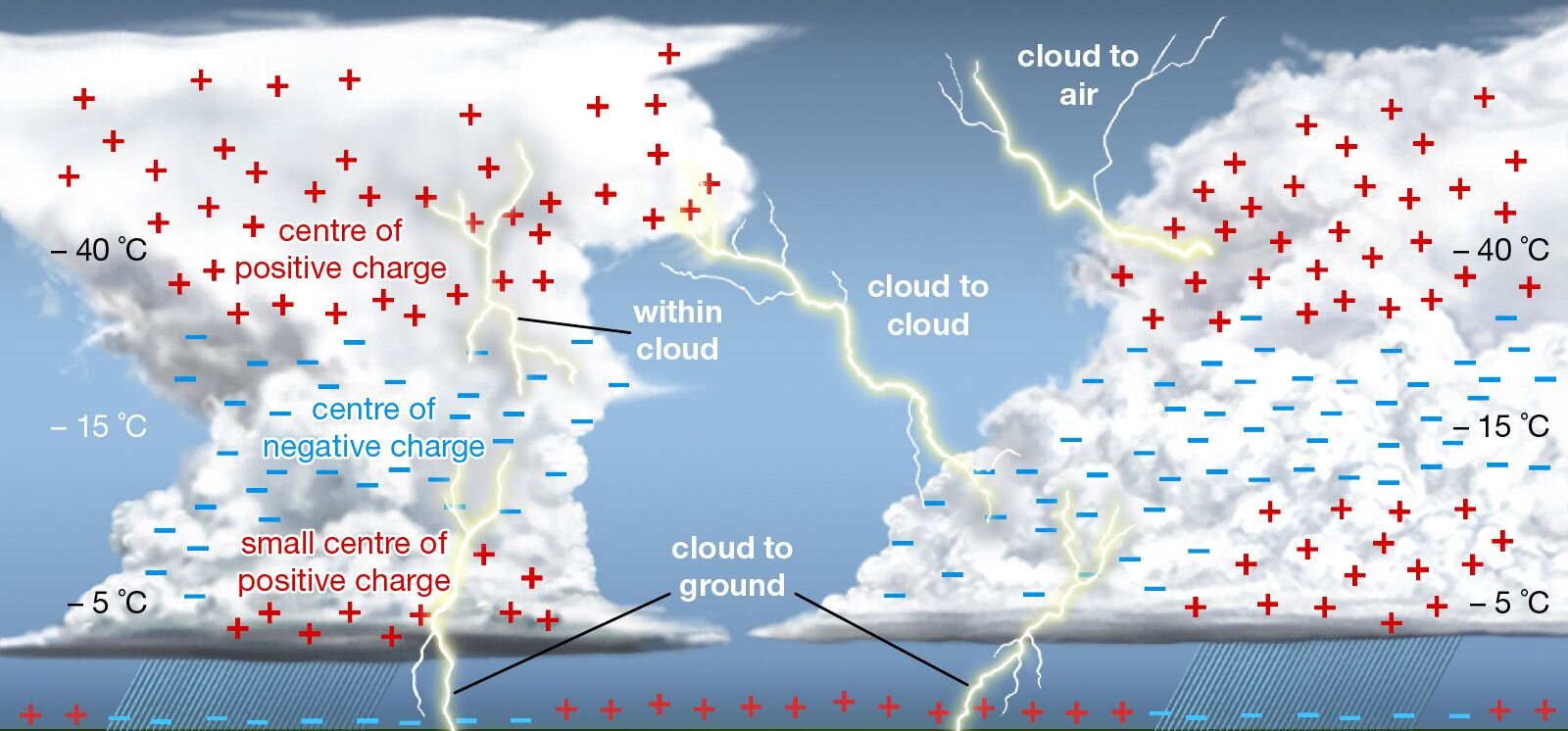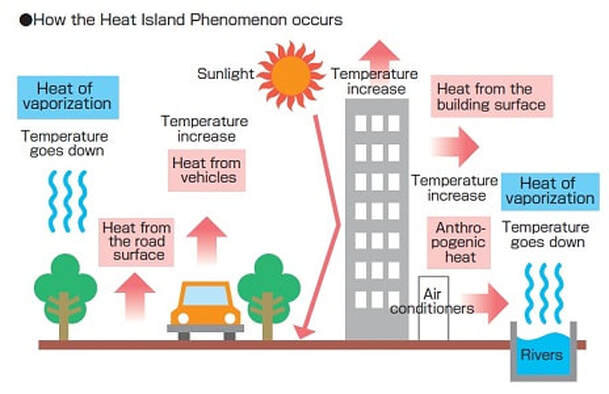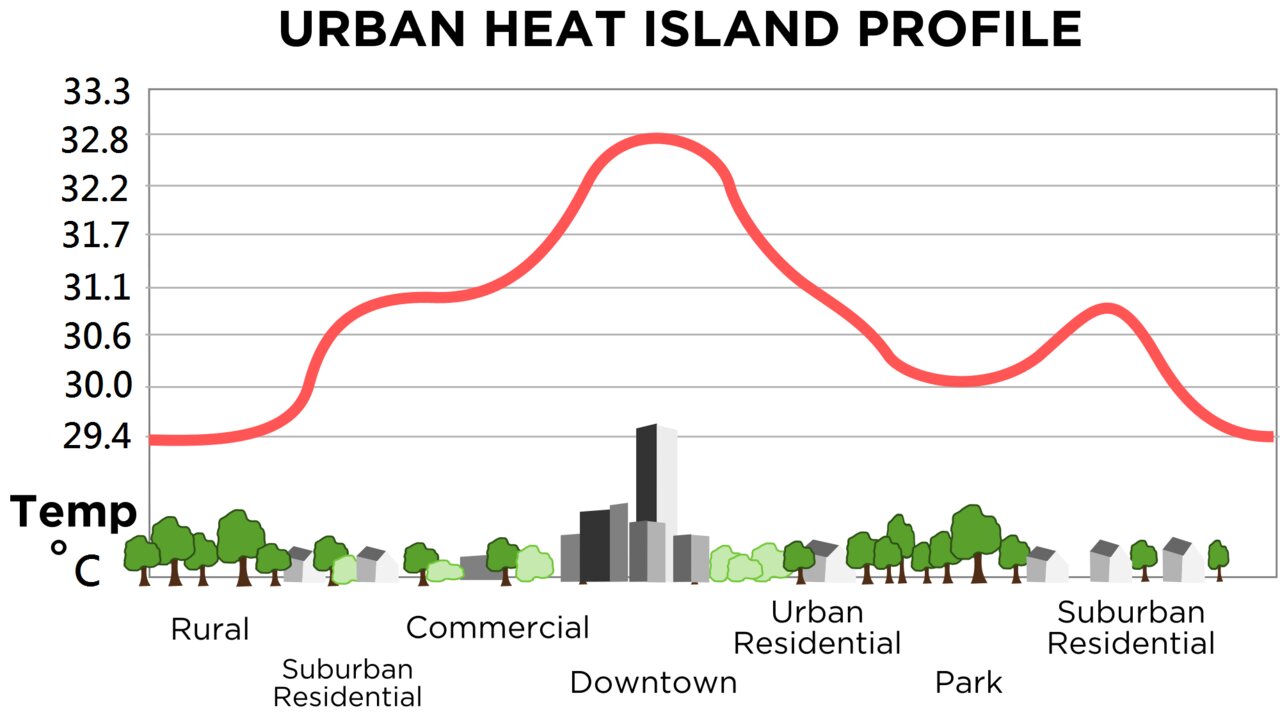Cities are turning into 'Lightening Magnets' | 09 May 2019
Scientists believe that as the world gets warmer and more polluted, the frequency and intensity of lightning may rise. Estimates suggest that lightning kills over 2500 people annually in India.
Factors that contribute
- Urban heat
- The concretization of urban areas, paired with a decrease in open, green spaces turns cities into heat sinks.
- As this warm air from cities rises, cooler air rushes in to fill the space. This can form convective clouds if sufficient moisture is available, leading to unstable weather.
- Convective clouds are often associated with increased lightning.
- The heat island effect was the main reason for a five-fold increase in lightning activity during pre-monsoon months in Delhi.
- The recent findings also show that global warming could lead to stronger thunderstorms.
- Pollution
- High concentration of aerosols (pollutants suspended in the atmosphere) pumps up the incidence of lightning.
- Aerosols reduce the size of cloud droplets, turning more water into ice, which increases the electrical conductivity of clouds by up to 50%.
- Research says that pre-monsoon rainfall is accompanied by more lightning flash counts than monsoonal rains. The main reason for this is pollution.
- The pre-monsoon season has higher concentration of suspended air pollutants. By comparison, the monsoon sees inflows of clean air from the ocean, which reduces pollution levels.
- Also, since the clouds are at a much lower height during monsoon, it reduces convective energy within the cloud, thus abating lightning.
- Lightning flashes also create pollutants - Ozone & Nitrogen Oxides - that can damage lung tissue and aggravate asthma. Nitrogen oxides get mixed with other gases in the atmosphere to produce ozone.
- Therefore, the risk of lightning is thus much bigger than what’s visible: the electrocution that causes death and injury. With pollution and global warming on the rise, an increase in the frequency of lightning seems inevitable.
What is Lightning?
- Lightning is the visible discharge of electricity that occurs when a region of a cloud acquires an excess electrical charge, either positive or negative, that is sufficient to break down the resistance of air.
- Lightning is usually associated with cumulonimbus clouds, but it also occurs in stratiform clouds (layered clouds with a large horizontal extent), in snowstorms and dust storms, and sometimes in the dust and gases emitted by erupting volcanoes.
- During a thunderstorm, lightning can occur within the cloud, between clouds, between the cloud and the air, or between the cloud and the ground.
- Lightning occurs when regions of excess positive and negative charge develop within the cloud.
- Typically, there is a large volume of positive charge in the upper regions of the cloud, a large negative charge in the centre, and a small positive charge in the lower regions. These charges reside on water drops, ice particles, or both.
- Thereby, sudden and violent electrostatic discharges within the cloud created the visible lightening.
- About one-third of the lightning flashes travel from the cloud to the ground.
- The potential difference between cloud and ground is of the order of 10 to 100 million volts.
- Thunder is produced by rapid heating of the air in the lightning channel and a consequent increase in air pressure. The overpressure causes the channel to expand at supersonic speeds, which ultimately produces a sound wave heard as thunder.
What is Urban Heat Island Effect?
- The elevated temperature in urban areas as compared to rural, less developed areas is referred to as the urban heat island effect. The process of urban development leads to this phenomenon.
- Urban climates are distinguished from those of less built-up areas by differences in air temperature, humidity, wind speed and direction, and amount of precipitation.
- These differences are attributable in large part to the altering of the natural terrain through the construction of artificial structures and surfaces.



